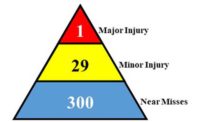 Increasingly, businesses are outsourcing their activities and processes. But what implications does the growing importance of supply chains have for working conditions? A new report from the European Agency for Safety and Health at Work (EU-OSHA) sheds light on occupational safety and health (OSH) within these complex networks of suppliers and service providers.
Increasingly, businesses are outsourcing their activities and processes. But what implications does the growing importance of supply chains have for working conditions? A new report from the European Agency for Safety and Health at Work (EU-OSHA) sheds light on occupational safety and health (OSH) within these complex networks of suppliers and service providers.
The report, “Promoting occupational safety and health through the supply chain,” analyzes existing literature on the subject, as well as government policies and case studies, to provide an overview of how OSH can be managed and promoted through the supply chain, and which incentives and instruments exist for companies to encourage good OSH practices among their suppliers and contractors.
Promoting occupational safety and health through supply chains is a good example of how workers can be safeguarded when organisations co-operate – this is the subject of EU-OSHA’s current Healthy Workplaces Campaign.
As EU-OSHA Director Christa Sedlatschek puts it, “Our Working together for risk prevention campaign is based on the idea that OSH is not just the responsibility of some people in the workplace, but that we create the safest working conditions when we are all involved. Nothing better illustrates this than businesses working with their supply chains, to help keep workers safe.”
The report shows that companies are affected by many different pressures in working with their supply chains to improve OSH: as well as market-based business considerations and sustainability and corporate social responsibility agendas, there are also external pressures, such as legal demands and the concerns of stakeholders, consumer groups and other pressure groups. Though there are considerable differences between sectors and between companies of different sizes, the report shows that successful attempts to influence businesses in promoting OSH throughout their supply chains often involve a mixture of regulation and market-based measures and initiatives.
Companies who are looking to hold their suppliers to high OSH standards need to be involved at many different stages of the contracting process, from choosing safe contractors at the pre-contract stage, to supervising work as it is being carried out, and reviewing the OSH performance of contractors when the contract ends. The report shows that the most successful initiatives use a combination of approaches, with clear rewards for environmental and socially responsible behaviour.
The report highlights the importance of safety certification schemes, in particular, as a way of promoting OSH in the supply chain: the national governing bodies of the different national schemes are currently examining how they could adopt a common, EU-wide approach, which would help in working with contractors from outside Europe.
Apart from procurement strategies and safety certification schemes, the report also looks at other approaches that can be used to diminish work accidents and ill health in the supply chain, and which could be taken up more widely in Europe. These approaches focus on issues such as clarifying contractual responsibilities, improving communication, cooperation and training, and putting in place joint control procedures.
Links
Report ‘Promoting occupational safety and health through the supply chain’
Healthy Workplaces Campaign ‘Working together for risk prevention’
The European Agency for Safety and Health at Work (EU-OSHA) contributes to making Europe a safer, healthier and more productive place to work. The Agency researches, develops, and distributes reliable, balanced, and impartial safety and health information and organises pan-European awareness raising campaigns. Set up by the European Union in 1996 and based in Bilbao, Spain, the Agency brings together representatives from the European Commission, Member State governments, employers’ and workers’ organisations, as well as leading experts in each of the EU-27 Member States and beyond.
Now you can follow the group on Twitter, visit the Agency’s blogor subscribe to its monthly newsletter OSHmail. You can also register for regular news and information from EU-OSHA via RSSfeeds.
The Foresight project involves looking beyond those workplace risks that are currently “emerging”, to try to anticipate change in the longer term. It involves developing scenarios in certain subject areas, looking at what might happen given certain technological developments or changes in society, and the implications for OSH, which decision-makers can act on. The first Foresight project is looking at “green” jobs; those which involve technology or practices which are designed to reduce environmental impact.
A report identifying the key drivers of change in the area and another on the key technologies in this area that may affect workplace health and safety were published in 2011


